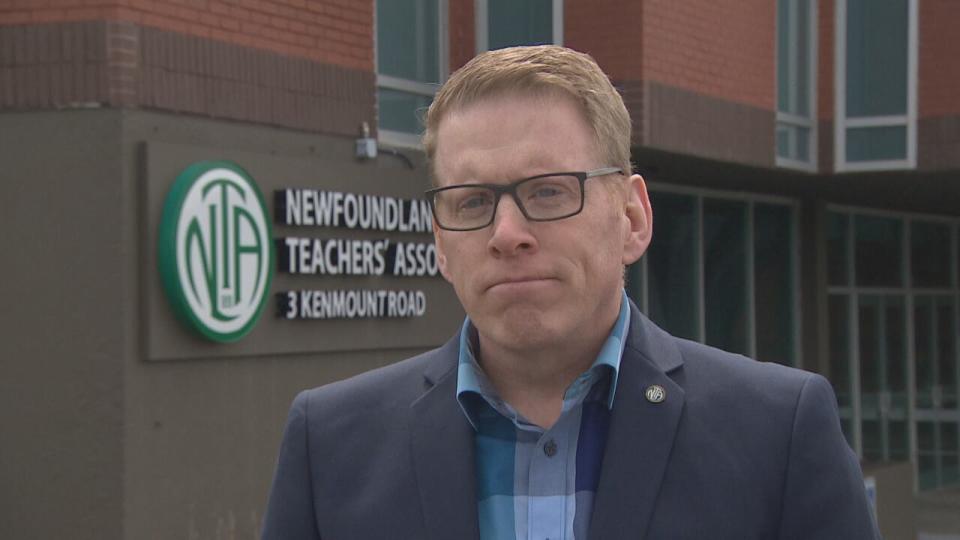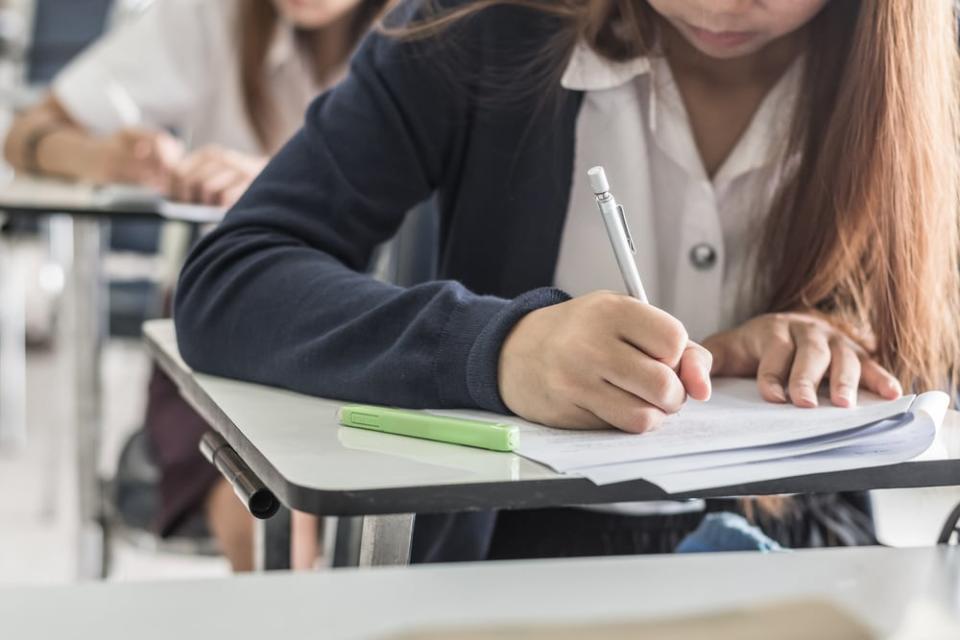Use of emergency supply substitute teacher skyrocketed after onset of pandemic: documents


Trent Langdon, president of the Newfoundland and Labrador Teachers' Association, says the use of emergency supply teachers shows the province's education system is unhealthy. (Darryl Murphy/CBC)
The use of emergency supply teachers skyrocketed in Newfoundland and Labrador after the onset of the COVID-19 pandemic, according to documents obtained by CBC News, and the head of the provincial teachers' association says their use must come to an end.
In the 2019-20 school year, there were about 35 emergency supply teachers — a substitute who isn't a fully qualified teacher, used when there are no other qualified teachers available — in the province's school system, according to documents obtained by CBC News through an access-to-information request. Just two years later, in the 2021-22 school year, there were 229 emergency supply teachers in the system, an increase of 554 per cent.
Trent Langdon, president of the Newfoundland and Labrador Teachers' Association, says the education system has become too reliant on the emergency supply teachers.
"Bottom line you've got unqualified, untrained people," Langdon told CBC News. "We're not calling them 'emergency supply teachers,' because they're not teachers. They're people who are filling gaps in our system right now."
Emergency supply teachers must have a minimum of a high school diploma and a vulnerable sector check from police, according to the Teacher Training Act Regulations.
The number of emergency supply teachers has dropped slightly since the 2021-22 peak, with 208 in use this school year.
But Langdon said the use of emergency supply teachers shows the education system is in an unhealthy place and shouldn't be the answer in any province.
"We've got 200 people in this province right now who aren't trained, that are going into schools and are leading classrooms. That alone should be enough of a of a worry," he said.
In schools on the Avalon Peninsula, there are 128 emergency supply teachers in use. Four years ago, there were no emergency supply licences approved.
Labrador is the only region where the use of emergency supply teachers has decreased since 2018 — from 18 workers in 2019-20 to 17 this year.
Langdon says he's worried about the impact it's having on the education system.
"They have no capacity to deliver curriculum. They're a placeholder, really. They come in, they keep things as safe as possible [but] they're not even trained in safety measures," he said.
"They are not trained teachers and that is our deep worry with this. This is a watering down of our system."

There are currently 208 emergency supply teachers in use in the province's classrooms for the 2023-24 school year. By comparison, there were 35 in use in the 2019-20 school year. (Chinnapong/Shutterstock)
Langdon said the increase in the number of emergency supply positions highlights the need to improve conditions for teachers in the system. Teachers are leaving the sector, overwhelmed by their workloads, he added, and there aren't enough substitute teachers to fill the gaps.
In an emailed statement to CBC News, Department of Education Communications Director Angela Picco said the department tries to bring in a certified teacher before resorting to emergency supply. Most emergency supply teachers are education students who are close to graduating, according to the statement, and those students can teach a limited amount of days. When emergency supply teachers are used, they're expected to deliver a lesson plan left by the teacher if there is one.
Download our free CBC News app to sign up for push alerts for CBC Newfoundland and Labrador. Click here to visit our landing page.

